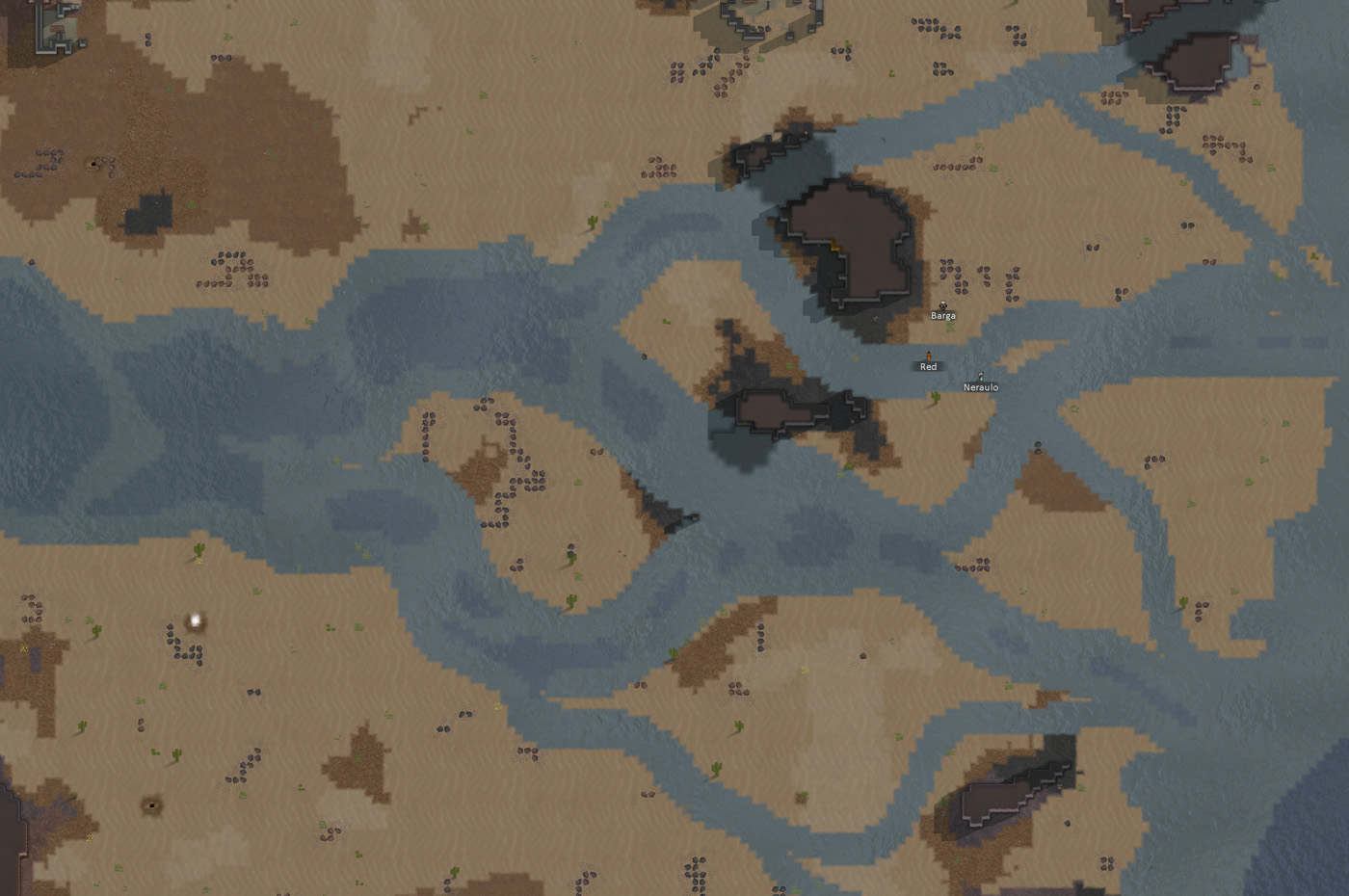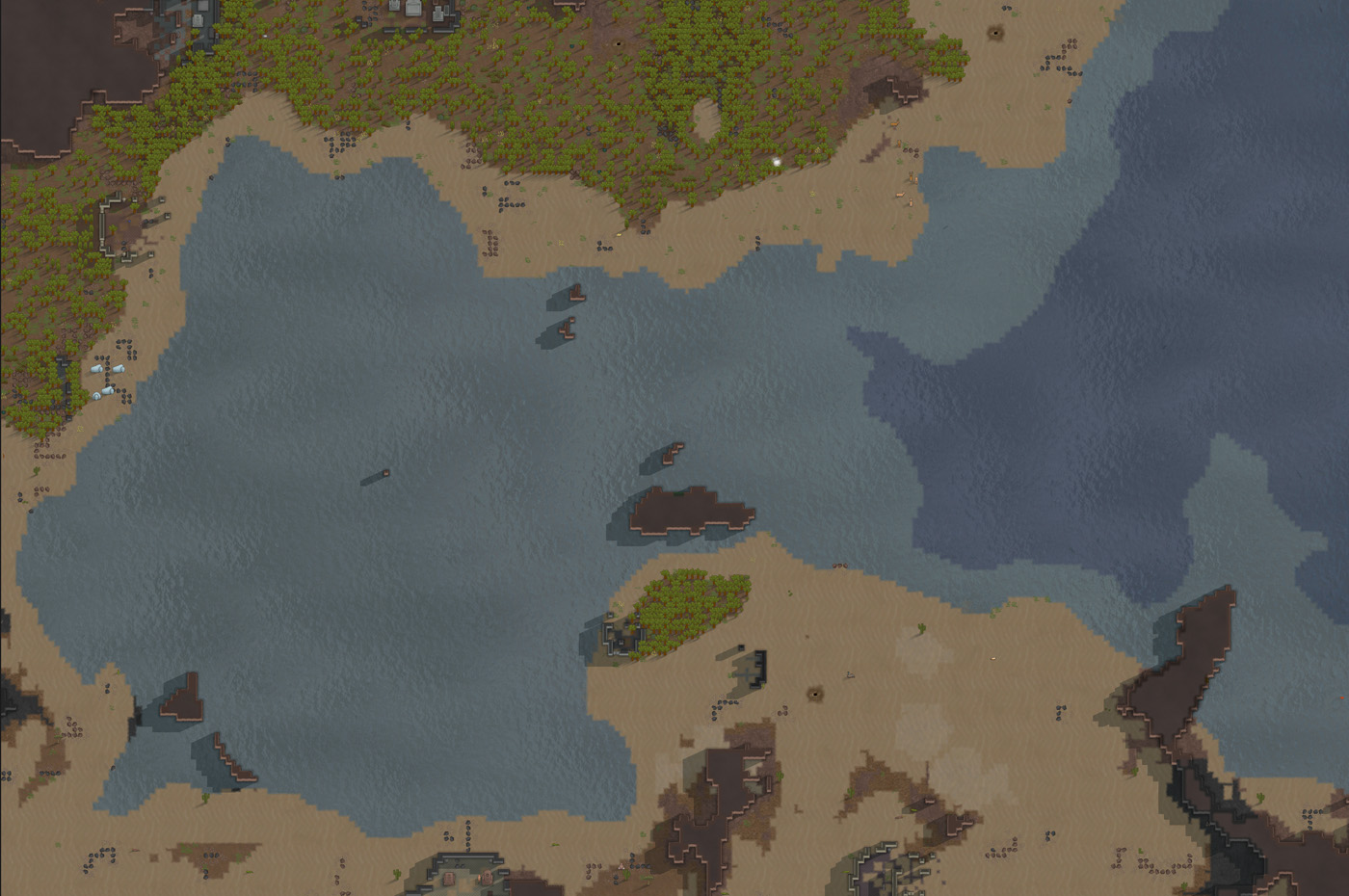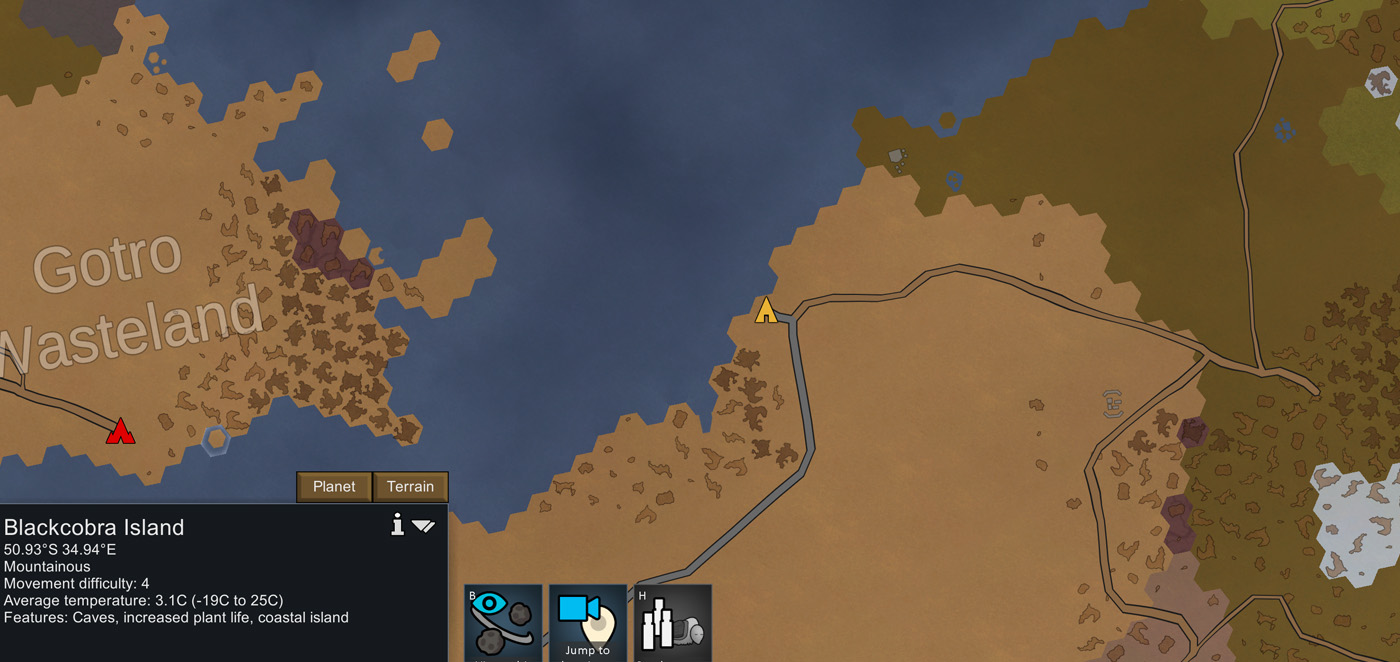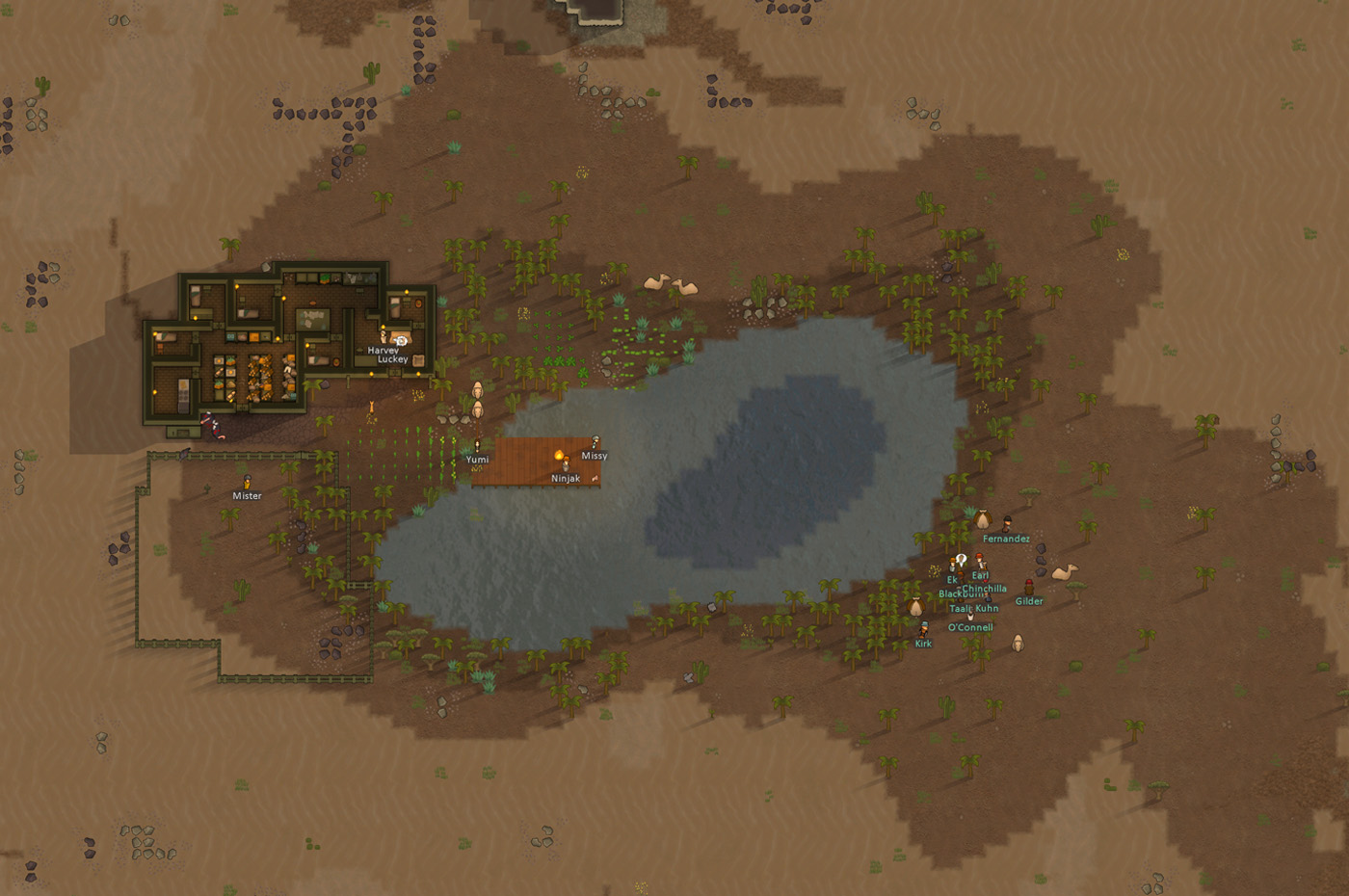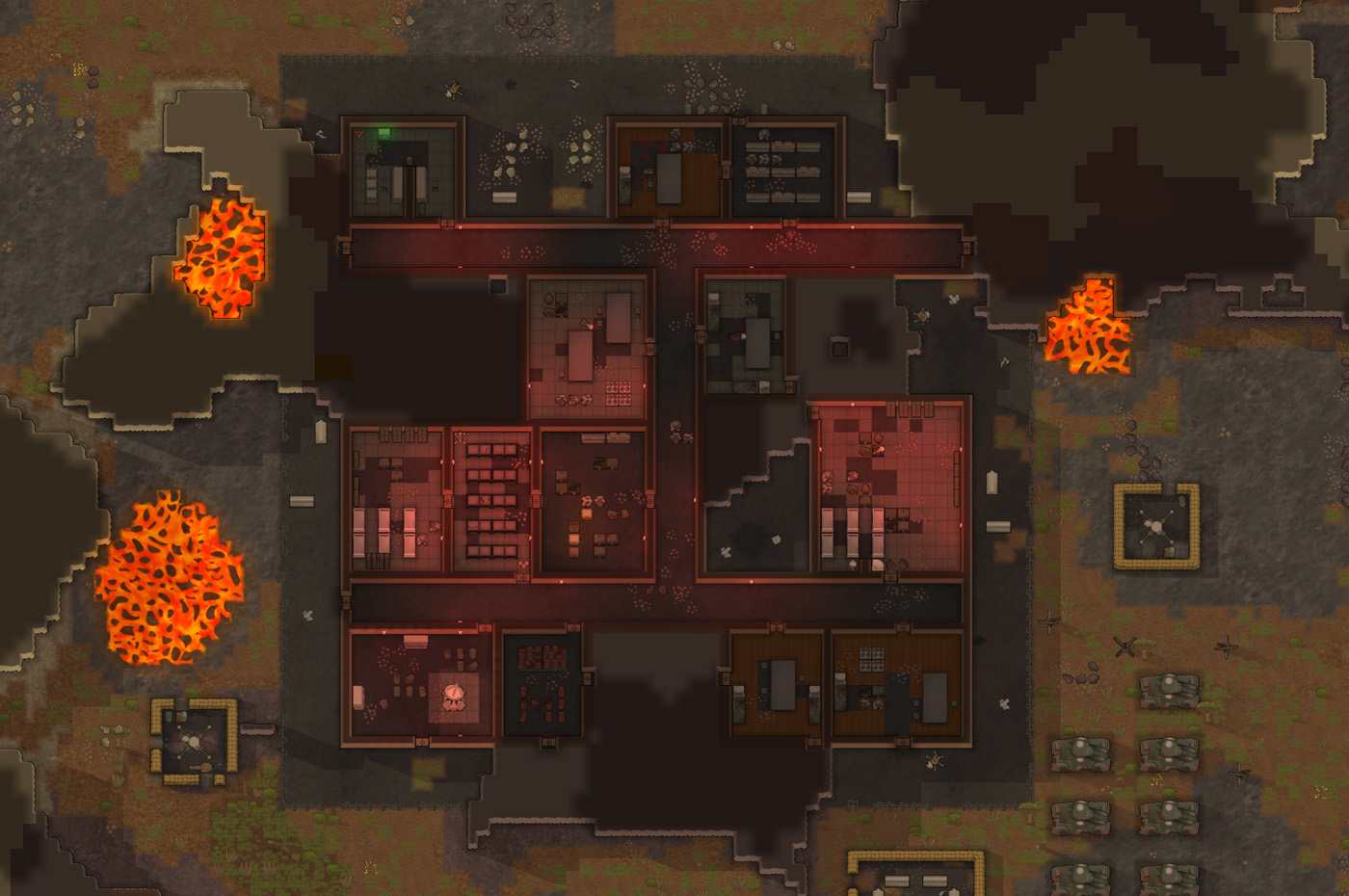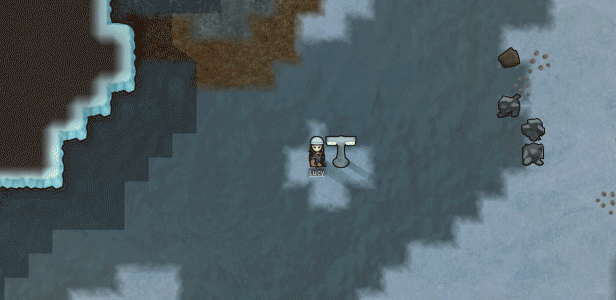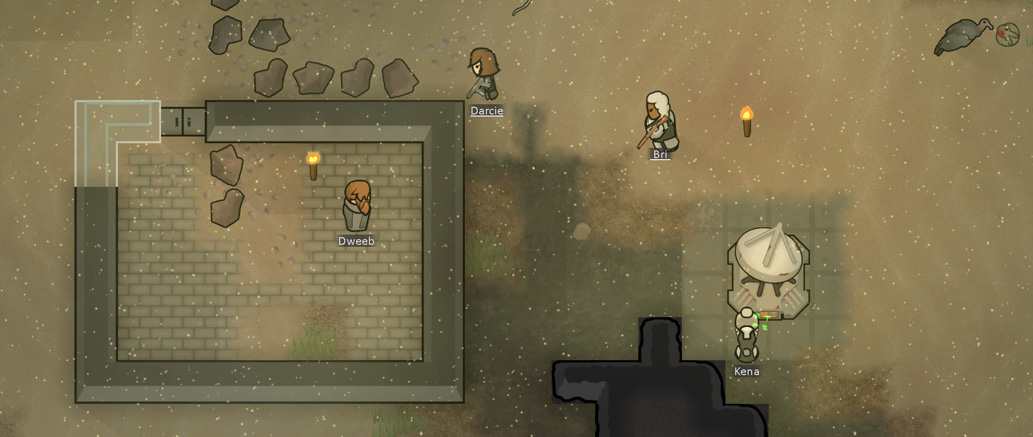New map features, landmarks, biomes, and weather
Hey everyone! We’re back with the first Odyssey blog post where we take a closer look at the expansion’s new content. We’ll be posting leading up to release – which is in approximately 3 weeks.
If you missed Odyssey’s announcement, check it out here, and please wishlist Odyssey on Steam.
Today’s post is all about the planet. We look at the map features and landmark system, five new biomes, and new weather types.
We spent a lot of time on new map generation systems and content Odyssey. For the gravship to be fun, you need new and exciting places to travel to!
(And don’t worry, we’ll be going into detail about the gravship itself soon.)
Map features and landmarks
Odyssey revamps map generation with over 85 dynamic map features. These include lava caves, obsidian deposits, drug stockpiles, and hippo habitats. Multiple features can be combined together on one map. Some are random, while others depend on their world map location. For example:
River varieties: Rivers come in more shapes and sizes, and they’re affected by their location on the world map. You’ll find confluences at points where rivers meet, deltas where rivers reach the ocean, and islands where the current splits and rejoins. At the river’s source is a headwater – a set of big water pools that flow downstream.
Mixed biomes: With Odyssey, biomes can blend together on a single map. For example, a map might have a temperate forest in the north and a desert in the south. This creates a mix of plants, animals, terrain and threats from both biomes.
Features and biomes can combine in countless ways – you might settle on a tropical swamp/forest peninsula with wild cocoa trees, extra fish, and warm, sunny weather.
Landmarks are the most dramatic and gameplay-changing map features, and frequently combine with multiple map features. They’re marked with custom art on the world map. A chemfuel refinery landmark, for example, might include an industrial building guarded by security systems – alongside a toxic lake, ancient heat vents, and an insect megahive burrowed beneath.
There are over 45 landmarks to explore – here are just a few of them:
Bays, lakes, atolls, archipelagos, peninsulas, and islands: Settle near the water or on coastal islands, and build your base on heavy bridges directly over the water. Fish for food, build quaint fishing villages, adapt to springtime floods, and enjoy the natural protection water provides from enemies.
Abandoned colonies: Why start from scratch? Take over old bases and make them your own. You might find working heaters, defenses, charged batteries, ripe crops, stocked barracks, medical stockpiles, and more. (But what happened? And why did they leave?)
Valleys, crevasses, caverns, chasms, and hollows: These rock formations create defensible and visually striking maps. Undergrounders will love the winding tunnels, natural chokepoints, and surrounding rock – they offer the perfect foundation for your subterranean fortress.
Oases: Lush, isolated sanctuaries hidden in the desert. Live off the rich soil, swim in the warm water, and carefully harvest the few precious palms.
Ancient garrisons, launch sites, chemfuel refineries, and warehouses: These ancient structures can be looted, used as temporary bases, or repurposed as deadly traps for raiders. But be careful – their security systems may still be functional.
Landmarks are great for starting colonies, exploring new areas, finding quests, or making pit stops with caravans, shuttles, and gravships. But even “ordinary” map tiles offer surprises and new content. We hope that this richness and variety will make each playthrough even more unique.
New biomes
Odyssey adds five new biomes, each with their own survival challenges and advantages.
Glowforests: Beneath sulfur-choked skies, the world glows with bioluminescent fungal light. There’s no day – only the shimmer of boomshrooms and clouds of hallucinogenic spores. Normal crops won’t grow, but who needs the sun? Convert biomass into chemfuel and power your own hydroponics garden. Fish in the marshy ponds, hunt creatures that live among the mushrooms, and give your colonists psilocaps to enjoy if they start complaining about the dark.
Scarlands: It was once a thriving city. Now, it is a shattered wasteland leveled by weapons of mass destruction. You can build here, but survival is brutal. The water is poison, the rain is toxic, and scaria runs rampant among the wild animals. Come well-prepared with supplies and firepower – there’s no food or help out there. Treasure may lie buried in the rubble, but the old defenses still work, and dormant mechanoids sleep in the ruins, waiting for their next chance to kill.
Grasslands: Endless golden fields, fertile land, and strong winds – this is a cowboy’s paradise! The long growing seasons are perfect for farming, and the steady breeze keeps your turbines spinning day and night. But trees are scarce, and drought can strike at any time – don’t count on the rain to get you out of trouble. Out here, fire moves fast, and many homesteads have gone up in flames. Space out your ranch, pave paths as firebreaks between pastures, and build with stone to keep your cattle safe.
Dynamic terrain and weather
Odyssey adds several systems to make maps feel more organic and alive.
For example, the terrain changes! Water freezes and melts as the temperature shifts. In winter, thin ice forms over bodies of water. Build a cozy fishing hut on top, cut a hole in the ice, and add a campfire so colonists can fish in warmth all winter long.
Lakes, rivers, and ponds can flood in spring or during torrential rains. Shallow floodwater will spread across the land, destroying crops and irritating your colonists with wet feet. Build barriers like walls, sandbags, or barricades to stop water from getting everywhere.
There are also new weather types in Odyssey.
Sandstorms sweep through deserts, getting sand everywhere – annoying your colonists and leaving a big mess to clean up. Nobody likes sand.
Torrential rain causes rivers and lakes to overflow, flooding the land. The downpour also makes it hard to see or aim accurately.
Toxic rain occurs in the scarlands, and it’s dangerous for colonists caught outside. It causes toxins to build up in their bloodstream, gradually poisoning them.
Strong winds hinder movement across open ground, but keep your wind turbines turning.
Blizzards bring heavy snow and fierce winds, obscuring vision and turning walks into slow, cold trudges.
Blind fog rolls in thick, drastically reducing visibility and the maximum range of weapons and abilities.
Overcast skies are gloomy and block out the sun, decreasing solar power generation.
More blog posts on the way
We’re really excited to see the maps and colonies you guys build when you get your hands on Odyssey. Even the dev team is surprised with the maps we make – every map is truly unique.
This is just the first preview, and next week, we’ll look at the gravship and spaaaaaace!
Until then, wishlist Odyssey on Steam, and chat with us about today’s blog on Reddit, X, and BlueSky.
– Ludeon Studios

